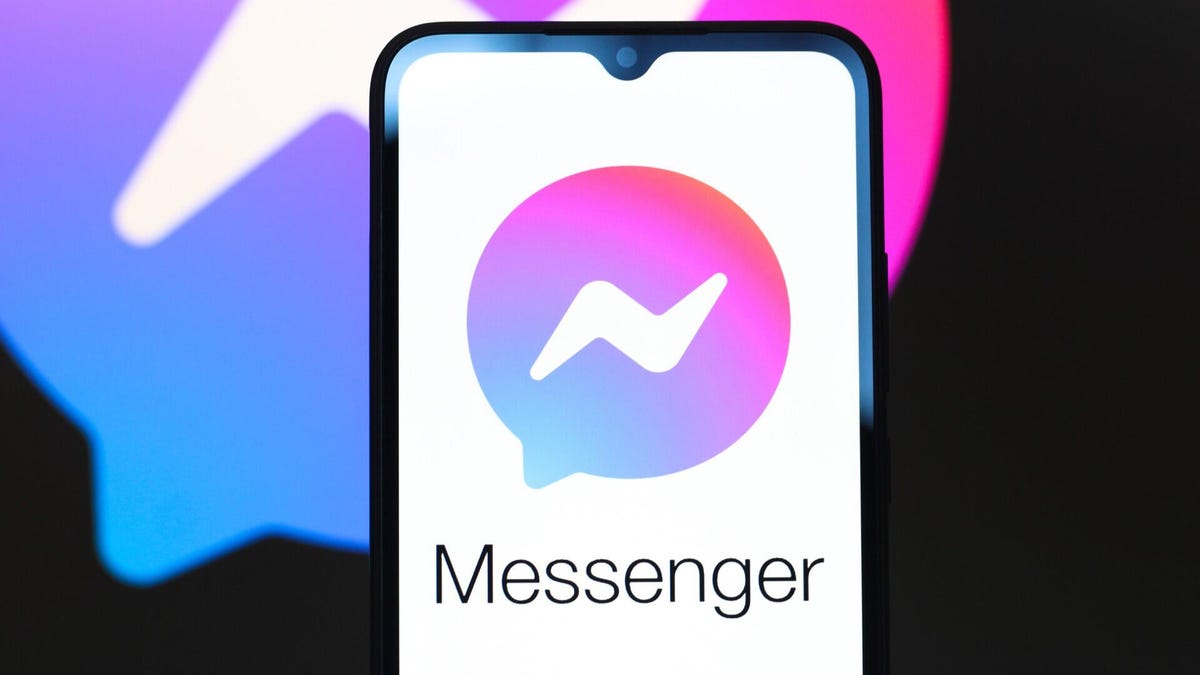Technologies
How to Claim Money From Apple’s $50 Million MacBook Keyboard Settlement
A class action suit claims Apple knew for years that the «butterfly» design in its MacBook keyboards was seriously flawed.

Did you buy a MacBook that had keyboard issues? If so, you might be eligible for part of a $50 million settlement Apple has agreed to in response to allegations it hid a known keyboard design flaw from customers.
Apple agreed to the multimillion-dollar payout in July, and a California court granted preliminary approval on Nov. 28.
MacBook Pro owners have started to receive emails and postcards notifying them they are eligible for payment, and the settlement website began accepting claims on Dec. 12.
Below, find out more about the MacBook settlement, including who qualifies for money, how much you could get from Apple and how to submit a claim.
For more class action suits, learn why Keurig is shelling out $10 million to users of its K-Cups and see if you’re eligible for money from T-Mobile’s $350 million data-breach settlement.
What is Apple accused of in the class action suit?
Apple introduced its «butterfly» keyboard design in 2015 in its 12-inch MacBook. The keys were attached with a wing-like hinge, as opposed to traditional keyboards, which use two pieces of plastic that, when pressed, cross each other and close like a pair of scissors.
At the time, the tech giant said the butterfly design was 40% slimmer, meaning its laptops could be too. But customers complained about the propensity for the keys to be sticky and miss or repeat typed characters.
Apple launched a repair program that covered MacBook, MacBook Pro and MacBook Air laptops in 2018. But it only replaced old butterfly keyboards with new ones.
Finally, in 2019, Apple phased out the butterfly design and introduced a redesigned Magic Keyboard that once more relied on a scissor-switch mechanism.
The butterfly design «had some things it did really well,» then-Apple marketing director Phil Schiller told CNET that year. «It felt more firm and flat under your finger — some people really like that, but other people weren’t really happy with that.»
Schiller also acknowledged there were «quality issues we had to work on.»
In a class action lawsuit filed in California in 2018, a group of plaintiffs claimed Apple knew about the quality issues and «fraudulently concealed» them from customers.
As a result, they claimed, laptops were knowingly equipped with keyboards that could result in «characters repeating unexpectedly; letters or characters not appearing; and/or the keys feeling ‘sticky’ or not responding in a consistent manner,» according to the settlement website.
Apple didn’t respond to a request for comment, but in filings, it denied any wrongdoing.
Who is eligible for a payment from Apple?
If you bought a MacBook between 2015 and 2019 and had to replace the keyboard or individual keys, you are eligible for compensation.
If you’re not sure if your model is covered, you can check here.
How much money could I get from the MacBook keyboard settlement?
The amount of the individual payout depends on how many repairs you had to have on your MacBook.
Consumers who had to swap out multiple keyboards within four years of purchase are considered Group 1 Settlement Class Members. They are eligible for an estimated payment of between $300 and $395 and should be receiving an email this month.
You can still qualify for Group 1 so long as you require two or more topcase replacements before Nov. 28, 2024. (The topcase houses the keyboard and other components.)
If you believe you’re part of Group 1 but didn’t receive a notification, you can call the claims administrator at 855-579-1311. (You can also fill out a change of address form, if needed.)
If you had to replace the keyboard once, you’re considered part of the Group 2 Settlement Class and could receive as much as $125. You’ll need to submit a claim form, though.
And if you only had to replace individual keycaps, you’re eligible for up to $50. (You’ll also have to submit a claim form.)
How do I file a claim in the Apple butterfly-keyboard settlement?
You can submit a claim on the settlement website or mail a completed form to:
re: MacBook Keyboard Litigation Settlement
c/o JND Legal Administration
PO Box 91341
Seattle, WA 98111
For all class members, if Apple doesn’t have a record of your repair or purchase, you’ll have to provide proof of purchase or repair.
The deadline to file a claim is 11:59 p.m. PT on March 6, 2023. If you want to object to the settlement — or exclude yourself and retain the right to separate litigation — the deadline to notify the court is Feb. 10, 2023.
When will I get my money?
A final approval hearing is scheduled for March 16, 2023. Any payments would go out after that, but the process could be delayed by appeals.
Technologies
Meta Is Shutting Down Its Mac and Windows Messenger Apps. What You Need to Know
Here’s what you need to do before the apps disappear at the end of the year.

If you use the desktop Messenger apps for Windows and Mac, you need to know that they’re disappearing soon. Meta is discontinuing the apps starting Dec. 15, when you’ll need to head to Facebook to continue chatting through the app on your computer.
Once the sundowning process begins, you’ll receive an in-app notification. You’ll have a 60-day window to continue using Messenger before the app is permanently shut down. (But don’t worry — the mobile app for Messenger will remain.)
Don’t miss any of our unbiased tech content and lab-based reviews. Add CNET as a preferred Google source.
If you want to save your chat history, Meta suggests activating secure storage before the app is gone forever. Otherwise, your chat history will be gone forever, as well.
The Messenger desktop app is no longer available on the Apple App Store. After Dec. 15, Meta users who try to access Messenger on desktop will be redirected to Facebook.com. Users without a Facebook account will be redirected to Messenger.com.
Technologies
This New Humanoid Home Robot Costs $20K, and You Still Have to Train It
The Neo robot from 1X is designed to do household chores, but it’s got a lot of learning still to do.

It stands 5 feet, 6 inches tall, weighs about as much as a golden retriever and costs near the price of a brand-new budget car.
This is Neo, the humanoid robot. It’s billed as a personal assistant you can talk to and eventually rely on to take care of everyday tasks, such as loading the dishwasher and folding laundry.
Neo doesn’t work cheap. It’ll cost you $20,000. And even then, you’ll still have to train this new home bot.
If that sounds enticing, preorders are now open (for a mere $200 down). You’ll be signing up as an early adopter for what Neo’s maker, a California-based company called 1X, is calling a «consumer-ready humanoid.» That’s opposed to other humanoids under development from the likes of Tesla and Figure, which are, for the moment at least, more focused on factory environments.
Neo is a whole order of magnitude different from robot vacuums like those from Roomba, Eufy and Ecovacs, and embodies a long-running sci-fi fantasy of robot maids and butlers doing chores and picking up after us. If this is the future, read on for more of what’s in store.
Don’t miss any of our unbiased tech content and lab-based reviews. Add CNET as a preferred Google source.
What the Neo robot can do around the house
The pitch from 1X is that Neo can do all manner of household chores: fold laundry, run a vacuum, tidy shelves, bring in the groceries. It can open doors, climb stairs and even act as a home entertainment system.
Neo appears to move smoothly, with a soft, almost human-like gait, thanks to 1X’s tendon-driven motor system that gives it gentle motion and impressive strength. The company says it can lift up to 154 pounds and carry 55 pounds, but it is quieter than a refrigerator. It’s covered in soft materials and neutral colors, making it look less intimidating than metallic prototypes from other companies.
The company says Neo has a 4-hour runtime. Its hands are IP68-rated, meaning they’re submersible in water. It can connect via Wi-Fi, Bluetooth and 5G. For conversation, it has a built-in LLM, the same sort of AI technology that powers ChatGPT and Gemini.
The primary way to control the Neo robot will be by speaking to it, just as if it were a person in your home.
Still, Neo’s usefulness today depends heavily on how you define useful. The Wall Street Journal’s Joanna Stern got an up-close look at Neo at 1X’s headquarters and found that, at least for now, it’s largely teleoperated, meaning a human often operates it remotely using a virtual-reality headset and controllers.
«I didn’t see Neo do anything autonomously, although the company did share a video of Neo opening a door on its own,» Stern wrote.
1X CEO Bernt Børnich told her that Neo will do most things autonomously in 2026, though he also acknowledged that the quality «may lag at first.»
What you need to know about Neo and privacy
Part of what early adopters are signing up for is to let Neo learn from their environment so that future versions can operate more independently.
That learning process raises privacy and trust questions. The robot uses a mix of visual, audio and contextual intelligence — meaning it can see, hear and remember interactions with users throughout their homes.
«If you buy this product, it is because you’re OK with that social contract,» Børnich told the Journal. «It’s less about Neo instantly doing your chores and more about you helping Neo learn to do them safely and effectively.»
1X says it’s taking steps to protect your privacy: Neo listens only when it recognizes it’s being addressed, and its cameras will blur out humans. You can restrict Neo from entering or viewing specific areas of your home, and the robot will never be teleoperated without owner approval, the company says.
But inviting an AI-equipped humanoid to observe your home life isn’t a small step.
The first units will ship to customers in the US in 2026. There is a $499 monthly subscription alternative to the $20,000 full-purchase price, though that will be available at an unspecified later date. A broader international rollout is promised for 2027.
Neo’s got a long road ahead of it to live up to the expectations set by Rosie the Robot in The Jetsons way back when. But this is no Hanna-Barbera cartoon. What we’re seeing now is a much more tangible harbinger of change.
Technologies
Chevy’s New Bolt EV Is a Truly Affordable Electric Car, at Less Than $30,000
It’s cheaper than other so-called «affordable» EVs and fixes the weaknesses of its predecessor.
-

 Technologies3 года ago
Technologies3 года agoTech Companies Need to Be Held Accountable for Security, Experts Say
-

 Technologies3 года ago
Technologies3 года agoBest Handheld Game Console in 2023
-

 Technologies3 года ago
Technologies3 года agoTighten Up Your VR Game With the Best Head Straps for Quest 2
-

 Technologies4 года ago
Technologies4 года agoVerum, Wickr and Threema: next generation secured messengers
-

 Technologies4 года ago
Technologies4 года agoBlack Friday 2021: The best deals on TVs, headphones, kitchenware, and more
-

 Technologies4 года ago
Technologies4 года agoGoogle to require vaccinations as Silicon Valley rethinks return-to-office policies
-

 Technologies4 года ago
Technologies4 года agoOlivia Harlan Dekker for Verum Messenger
-

 Technologies4 года ago
Technologies4 года agoiPhone 13 event: How to watch Apple’s big announcement tomorrow

